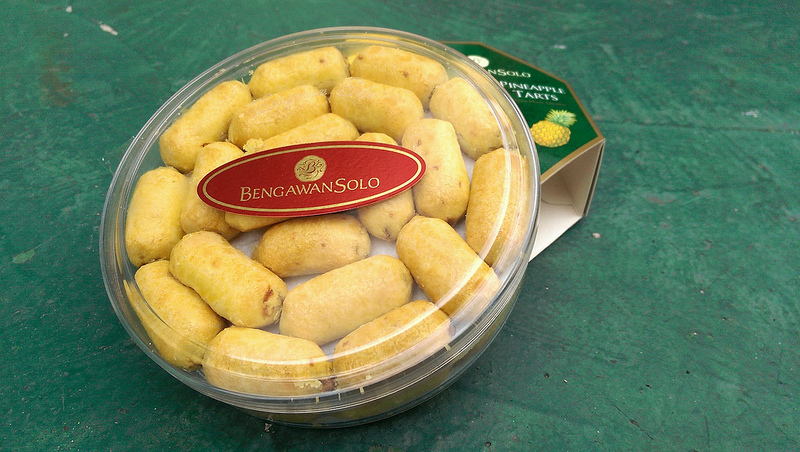
A friend brought back Bengawan Solo pineapple tarts from her business travel to Singapore! Pineapple tarts are popular in Singapore, Malaysia, and Indonesia. Bengawan Solo is based in Singapore.
I upgraded my Samsung Galaxy Nexus to the HTC One (M8); hooray for no more crappy photos if I forget my dSLR! All photos below were taken on my M8.





Below is a fantastic excerpt from DB Memoirs, that pretty much sums up how the pineapple tarts tasted!
I had read somewhere that one of the things that you must buy in Singapore is Bengawan Solo pineapple tarts. Honestly, they didn’t sound very appealing to me. I like tarts. I like pineapple. Together, though, not so much.
The first taste was sour! It was a real eye-opener. This thing was telling me from the get-go that it was not a sickly sweet kiddie treat. Almost immediately after the initial bite, the pastry crumbled and melted in my mouth, neutralizing the tartness (pun intended) and mellowing the flavors out.
My tongue told me: There’s the butter. There’s the flaky pastry. There’s the slightly fibrous fruit. Some zing, some richness, a bit of chewiness. And then, poof. It was gone.
I reached for another one. And another, and another. Before I knew it, I had inhaled half of my tarts.
Is anybody going to Singapore? Please, please bring me back some Bengawan Solo pineapple tarts. And get a box for yourself, too. You will not regret it.
The following is some info about pineapple tarts, from Wikipedia:
The pastry consists of a large proportion of butter and egg yolk, besides using corn starch, giving it a rich, buttery, tender and melt-in-the-mouth texture. The pineapple jam is usually made by slowly reducing and caramelizing grated fresh pineapple that has been mixed with sugar and spices – usually cinnamon, star anise and cloves.
Typical shapes include a flat, open tart topped with pineapple jam under a lattice of pastry, rolls filled with jam that are open at the ends and jam-filled spheres.
Considered a “festive cookie”, pineapple tarts are usually consumed during Hari Raya, Chinese New Year, and Deepavali periods in Singapore and Malaysia. However, they are sold all year round by commercial bakeries and by souvenir stores serving tourists.
Here’s some interesting background, from Kawan-Kawan Katong:
Who started making pineapple tarts anyway, the Eurasians or the Peranakans?
A difficult question to answer, so it turned out. Quite clearly, the techniques behind pineapple tarts appear to me more European in origin. The cooking of the jam, the use of European pastry suggest that the Eurasians may have come up with the tart first. But then, the pineapple tart is a treat so closely associated with traditional Chinese New Year celebration food. The golden colour of the pineapple jam on top of the pastry circle, or the jam forming the golden heart of a pastry ball – the very appearance is auspicious. And then “pineapple” translates (or so I understand) to “Ong Lai”, or “wealth comes” in Hokkien. Doubly prosperous, indeed! Little wonder the Peranakans embaraced the pineapple tart as their very own.
Glad you like the pineapple tart! For me, it’s so sinful (high calories) that I must prevent myself from overeating it during Chinese New Year.